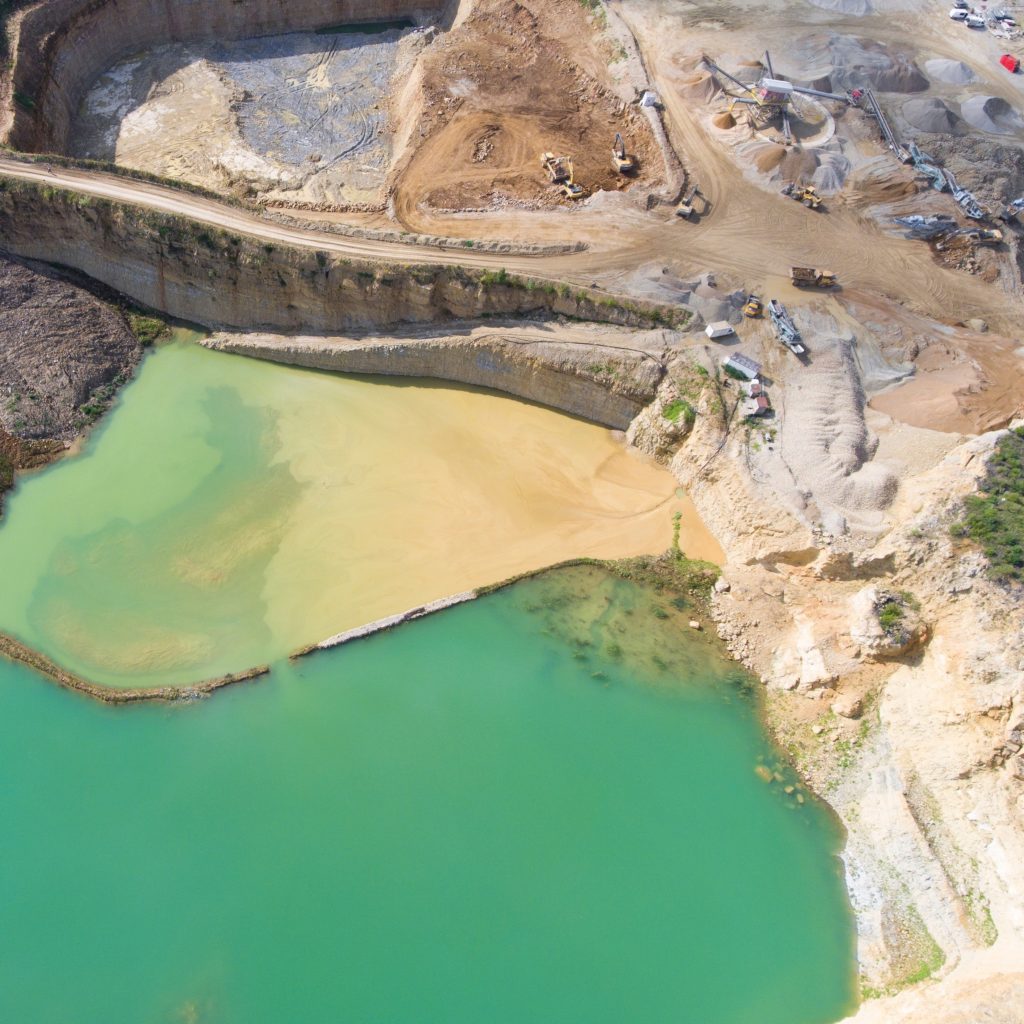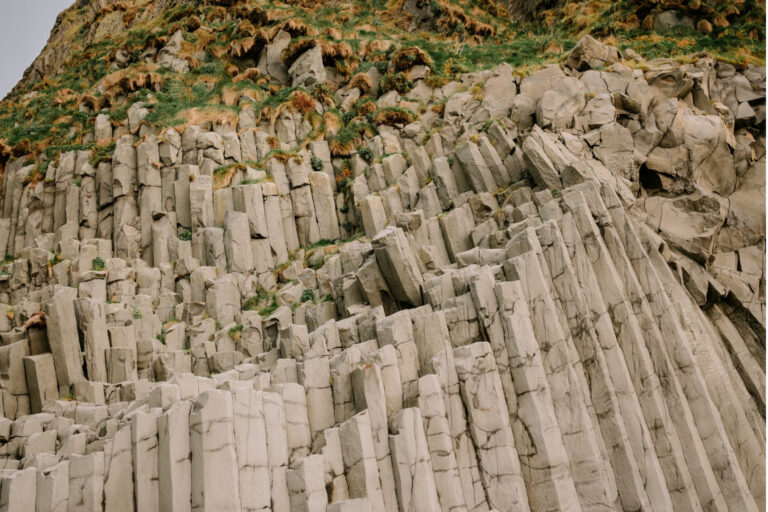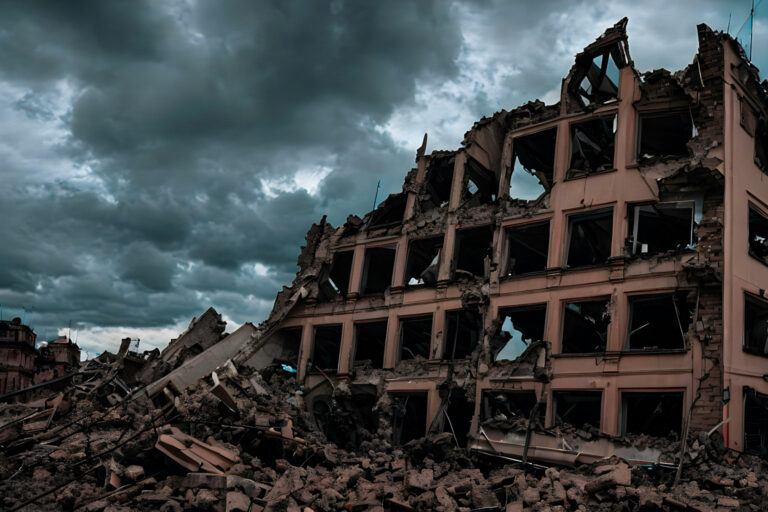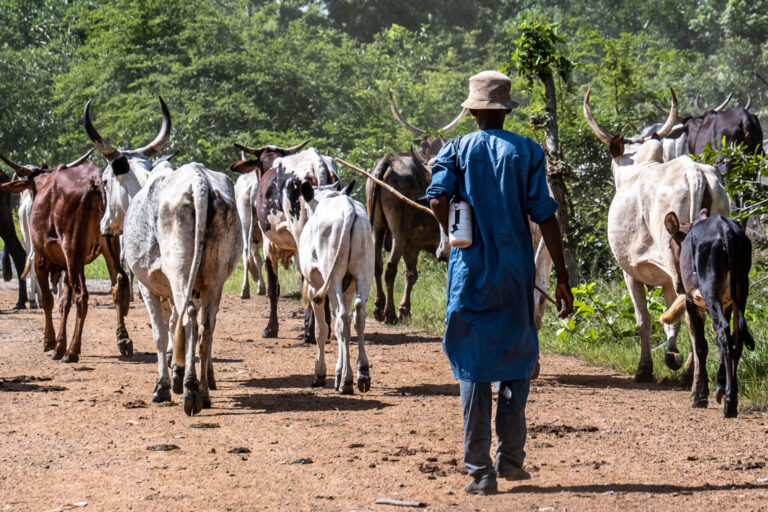Money laundering serves as an important tool for transnational organized crime groups and terrorist organizations, enabling them to transform profit from illegal activities into clean funds for use in the licit financial system. Malign actors hide their money laundering efforts from law enforcement in a myriad of ways, but the purchase of legal or illegal gold with illicit funds stands out as a particularly effective method. Gold allows launderers to convert their cash into a stable, anonymous, transformable, and easily exchangeable asset to reinvest the profits of their criminal activities.1
In light of major international economic shocks due to the COVID-19 pandemic, gold, the “currency of last resort,” appeals to investors due to its historical stability.2 In first quarter of 2020, investors purchased a record-breaking $23 billion of exchange-traded funds (ETF) that hold gold. The ETFs used this money to add 298 metric tons of gold to global holdings.3 Meanwhile, Goldman Sachs told its clients to buy gold to protect themselves against likely rises in inflation as a result of COVID-19 stimulus spending.4 As demand for gold rises, it becomes increasingly important to ensure that gold comes from legal mines where organized crime groups cannot use mining profits to fund illegal activities.
Latin America plays an important role in providing illegally mined gold to both licit and illicit customers internationally. It produces 17 percent of international gold output per year, but numerous countries in the region struggle to contain rampant illegal mining operations. Specifically, 28 percent of gold mined in Peru, 30 percent of gold mined in Bolivia, 77 percent of gold mined in Ecuador, 80 percent of gold mined in Colombia, and 80–90 percent of gold mined in Venezuela arises from illegal production.5 Peru, the largest producer in Latin America, reported 178 tons of legally mined gold in 2014. However, Peruvian customs registered 290 tons of gold exports—a difference of 112 tons, worth more than $3 billion.6 This difference demonstrates the large volume of illegal gold exports from Latin America and indicates the high level of demand in the international market.
The Illegal Mining Problem
The prevalence of illegal mining necessitates an understanding of its destructive nature. First, illegal mining attracts other forms of illicit activity, including forced labor and human trafficking. According to Livia Wagner, a researcher at the Global Initiative Against Transnational Organized Crime, “Sexual exploitation is very much prevalent in illegal mining areas, especially in Peru and Bolivia, and my impression is that the girls are getting younger and younger. The scale is staggering.”7 Furthermore, then Deputy Assistant Secretary of State for International Narcotics and Law Enforcement Affairs, Richard Glenn, stated, “since 2010 50,000 children have been forced to work in the illegal gold mines or subjected to sex trafficking in the mining camps in the Madre de Dios and Puno regions” of Peru.8 The mines themselves contain many hazards, exposing workers to wall and mine collapses, landslides, explosives accidents, and mercury and harmful gases.9 Additionally, the discovery of a mass grave containing the remains of twenty individuals outside a mine in Madre de Dios illustrates the frequency of on-site fatalities.10 In short, illegal mines harbor egregious human rights abuses.
Second, illegal mining destroys the surrounding environment. In 2017 alone, illegal mining contributed to 155 thousand hectares of deforestation of Peru’s jungle regions.11 Illegal miners also use massive amounts of mercury during their operations, which often pollutes local water supplies, leading to health complications for local populations. For instance, locals living in Colombia’s Guainía department12 had 60 to 109 times more mercury in their systems than the World Health Organization’s recommended amount.13
Third, organized crime groups increasingly target environmental activists due to their staunch opposition to illegal mining and other environmental crimes. In Peru, they murdered dozens of environmental activists since 200214 and four indigenous leaders since the COVID-19 lockdowns.15 Of the 212 environmental activists killed in 2019, over two-thirds of the murders took place in Latin America, according to a Global Witness report.16 Therefore, illegal mining operations attract other illegal and damaging activities, destroy the surrounding environment, and incentivize criminal groups to exterminate any local opposition to them when intimidation fails.
Operation Mercury
It follows that the United States and (most) Latin American countries have interests in halting the production of illegal gold, and Peru’s recent actions exemplify how governments can begin mitigating the illegal mining problem. In 2017, the United States and Peru signed a Memorandum of Understanding (MOU) on cooperation related to small-scale gold mining. In the agreement, both sides committed to mitigating the negative social, economic, and environmental impacts of illegal mining activities while promoting sustainable alternative economic development and legal mining initiatives.17
As a result of the MOU, Peru, assisted by the United States, launched Operation Mercury: a two-year plan to evict illegal miners from Madre de Dios, an epicenter of illegal mining in Peru.18 The operation included 1,200 Peruvian police, 300 soldiers, and 70 prosecutors, aimed at removing an estimated 6,000 illegal miners from the La Pampa area of Madre de Dios and establishing a semi-permanent government presence in the region to prevent their return.19 The operation largely succeeded, and Peruvian President Martín Vizcarra announced in February 2020 that one year after Operation Mercury began, Madre de Dios attained 100% elimination of illicit mining.20 Additionally, third-party reports from the Monitoring of the Andean Amazon Project show that deforestation in the area fell by 92%.21
Operation Mercury achieved its goal of reducing illicit mining in Madre de Dios for many reasons. First, the operation had the full backing of Peru’s national government. The Peruvian National Police and Ministries of Defense, Environment, Health, Energy and Mines, and Agriculture (among others) all participated in the operation and handled different dimensions of the mission. For instance, the Ministry of Defense set up semi-permanent military bases throughout Madre de Dios while the Ministry of Health attended to liberated victims of human trafficking found near illegal mines.22 Notably, Madre de Dios Governor Luis Hidalgo Okimura supported the operation, whereas previous governors resisted similar efforts in the past.23
Second, Operation Mercury emphasized economic development and alternative job creation projects alongside law enforcement efforts. In the past, the Peruvian government tried to curb illegal mining through force alone, resulting in predictable failures.24 Since mining generates an important sources of income for inhabitants in the region, combating illegal mining without creating viable employment alternatives reduces local support for the government’s anti-mining operations. As of February 2020, one year after Operation Mercury’s launch, the Peruvian government has invested 300 million soles (roughly $86.5 million) in infrastructure and production projects in the department.25
Third, alongside job creation programs, Peru’s Ministry of Energy and Mines formalized hundreds of previously illegal miners in Madre de Dios.26 The government had one condition: “no mercury, no child labor, and no human trafficking” in legal mines.27 All sides gain from this arrangement. The government has more businesses and individuals which it can tax, and it can more effectively regulate legal mines to certify compliance with health, safety, and environmental standards. For the miners, they will no longer face police raids on their mines and the financial uncertainty that comes with operating in an illicit economy. Now, the government must continue formalizing miners while working to ensure that organized crime groups do not abuse formalization to cover up illegal operations.28
Fourth, the United States played a positive role in the implementation of Operation Mercury. Through the 2017 MOU the U.S. supplied $50 million to “help Peru combat criminal organizations and the environmental impact of illegal gold mining.”29 More specifically, the State Department provided operational support to the Peruvian National Police efforts and supported the Attorney General’s efforts to set up a forensics laboratory in Madre de Dios with advanced technology to detect mercury and map crime scenes.30 In short, external funding and operational support from likeminded nations contributed to Operation Mercury’s success.
Lastly, the operation succeeded due to the Peruvian state’s commitment to maintain a semi-permanent troop presence in the area to guarantee that organized crime groups do not return to Madre de Dios and reimpose illegal mining. The Peruvian army established four bases manned by one hundred special forces soldiers from the 6th Army Special Forces Brigade alongside fifty National Police officers and one prosecutor from the Public Ministry.31 Patrols from these bases help identify undetected illegal mining operations and prevent gangs from operating in the region.
Few policy initiatives reach perfection, and Peruvian officials need to consider extending the presence of armed forces in Madre de Dios past 2021 to prevent the return of organized crime. Madre de Dios’ police forces also need help containing a surge in petty and violent crime, which Madre de Dios’ governor claims to result directly from eradicating illegal mining and the subsequent lack of employment opportunities.32 On that note, the national government needs to continue pumping in funds to spur economic development and create viable employment alternatives to the illicit economy. Lastly, while Operation Mercury did not push illegal miners into neighboring national parks and nature reserves and contribute to greater deforestation there, the government must continue to monitor the area to make sure illegal mining does not encroach into these vulnerable areas.33
Conclusion
With the above caveats in mind, Operation Mercury demonstrates an effective anti-illegal mining effort. It included a sizeable law enforcement dimension accompanied by serious efforts to formalize illegal miners and create alternative job opportunities. The operation extended the state’s presence in the region through semi-permanent military and police bases to keep organized crime at bay, while enabling prosecutors to charge members of organized crime and those responsible for human rights abuses. Peru worked effectively with external partners to secure funding and operational assistance, and the United States aided the operation without overbearance. This may serve as a general template in future anti-illegal mining operations in Latin America. In light of heightened demand for gold as a result of recent economic shocks, understanding effective methods to mitigate illegal mining and its negative side effects carries greater relevancy.
1 Financial Action Task Force, Money laundering / terrorist financing risks and vulnerabilities associated with gold, July 2015, https://www.fatf-gafi.org/media/fatf/documents/reports/ML-TF-risks-vulnerabilities-associated-with-gold.pdf (accessed March 30, 2020).
2 Simon Constable, “COVID-19 Panic Sparks Record-Breaking Gold Buying Binge During First Quarter,” Forbes, April 8, 2020, https://www.forbes.com/sites/simonconstable/2020/04/08/covid-19-panic-sparks-record-breaking-gold-buying-binge-during-first-quarter/#6a51d7c23bd9 (accessed April 13, 2020).
3 Simon Constable, “COVID-19 Panic Sparks Record-Breaking Gold Buying Binge During First Quarter.”
4 Neil Hume & Henry Sanderson, “Goldman Sachs tells clients it is time to buy gold,” Financial Times, March 24, 2020, https://www.ft.com/content/052f4932-6de2-11ea-89df-41bea055720b (accessed April 13, 2020).
5 Livia Wagner, “Organized Crime and Illegally Mined Gold in Latin America,” The Global Initiative Against Transnational Organized Crime, April 2016, https://arcominero.infoamazonia.org/GIATOC-OC_Illegally-Mined-Gold-in-Latin-America-3c3f978eef80083bdd8780d7c5a21f1e.pdf (accessed March 30, 2020).
6 The Global Initiative Against Transnational Organized Crime, Organized Crime.
7 Anastasia Moloney, “Sex trafficking ‘staggering’ in illegal Latin American gold mines,” Thomson Reuters Foundation, March 30, 2016, https://news.trust.org/item/20160330163104-x2gj3/ (accessed March 30, 2020).
8 U.S. Congress, Senate, Senate Foreign Relations Subcommittee on the Western Hemisphere, Transnational Crime, Civilian Security, Democracy, Human Rights, and Global Women’s Issues, Illicit Mining: Threats to U.S. National Security and International Human Rights, 116th Congress, 1st sess., 2019, https://www.foreign.senate.gov/imo/media/doc/120519_Glenn_Testimony.pdf.
9 U.S. Department of Labor, Bureau of International Labor Affairs, 2018 Findings on the Worst Forms of Child Labor: Peru (2018), https://www.dol.gov/agencies/ilab/resources/reports/child-labor/peru.
10 Andy Livise, “Estas Son las Escalofriantes Imágenes que Demuestran la Existencia de Fosas Donde Quemaban a Mineros Ilegales,” Utero.pe, February 28, 2017, http://utero.pe/2017/02/28/estas-son-las-escalofriantes-imagenes-que-demuestran-la-existencia-de-fosas-donde-quemaban-a-mineros-ilegales/, (accessed March 30, 2020).
11 James Bargent, “Satellite Images Show Threat of Criminal Activities in Peru’s Amazon,” InSight Crime, March 20, 2019, https://www.insightcrime.org/news/brief/satellite-images-highlight-threat-to-perus-amazon-forest/ (accessed March 30, 2020).
12 A department in Colombia is roughly equivalent to a state in the United States.
13 Tatiana Pardo Ibarra, “En Guainía, la gente tiene 60 veces más mercurio que el permitido,” El Tiempo, September 11, 2017, https://www.eltiempo.com/vida/medio-ambiente/poblacion-de-guania-tiene-niveles-de-mercurio-mas-altos-que-el-promedio-129712 (accessed March 30, 2020).
14 Juan Castro Oliveira, “Peru Activist Killings Condemned Ahead of Climate Talks,” Amazon Watch, November 17, 2014, https://amazonwatch.org/news/2014/1117-peru-activist-killings-condemned-ahead-of-climate-talks (accessed October 4, 2020).
15 Aramís Castro & Clarys Cárdenas, “Crimen e impunidad en Madre de Dios: el cuarto asesinato de un líder ambiental en pandemia,” OjoPublico, September 13, 2020, https://ojo-publico.com/2087/madre-de-dios-el-cuarto-asesinato-de-un-lider-ambiental-en-pandemia (accessed October 4, 2020).
16 “Defending Tomorrow: The Climate Crisis and Threats Against Land and Environment Defenders,” Global Witness, July 29, 2020, https://www.globalwitness.org/en/campaigns/environmental-activists/defending-tomorrow/ ( accessed October 5, 2020).
17 “Memorandum of Understanding Between the Government of the United States of America and the Government of Peru on Cooperation Related to Small-Scale Gold Mining,” September 20, 2017, U.S. Embassy in Peru, https://d2v9ipibika81v.cloudfront.net/uploads/sites/107/2017-MOU-Gold-Mining.pdf.
18 Franklin Briceno & Rodrigo Abd, “Peru’s military tries to curb illegal mining in the Amazon,” AP News, May 17, 2019, https://apimagesblog.com/blog/2019/5/16/usjf38zyjjj4xhq2ty1l8lu44iuxlp (accessed March 30, 2020).
19 U.S. Congress, Senate, Subcommittee, Illicit Mining.
20 “Vizcarra anuncia que La Pampa está 100% libre de minería ilegal,” La República, February 27, 2020, https://larepublica.pe/politica/2020/02/27/martin-vizcarra-anuncia-que-la-pampa-esta-100-libre-de-mineria-ilegal-madre-de-dios-operacion-mercurio/ (accessed March 30, 2020).
21 John C. Cannon, “¿Cuál es el futuro de la Operación Mercurio de Perú?” Mongabay LATAM, May 15, 2020, https://es.mongabay.com/2020/05/peru-futuro-de-la-operacion-mercurio/ (accessed October 5, 2020).
22 “Recuperación de La Pampa,” El Peruano, February 28, 2019, https://www.elperuano.pe/noticia-recuperacion-de-pampa-76135.aspx (accessed April 6, 2020).
23 Dan Collyns, “Inside La Pampa: the illegal mining city Peru is trying to wipe out,” The Guardian, March 25, 2019, https://www.theguardian.com/cities/2019/mar/25/la-pampa-the-illegal-mining-city-peru-wants-wiped-out (accessed April 6, 2020).
24 “Nick Miroff, “Peru fights gold fever with fire and military force,” Washington Post, August 18, 2014, https://www.washingtonpost.com/world/peru-fights-gold-fever-with-fire-and-military-force/2014/08/18/2c9db976-bfd5-4217-a846-31bde9871e21_story.html (accessed April 6, 2020).
25 “Estado invirtió S/ 300 mllns. en obras para Madre de Dios,” February 20, 2020, El Peruano, https://elperuano.pe/noticia-estado-invirtio-s-300-mllns-obras-para-madre-dios-90097.aspx (accessed April 6, 2020).
26 “Formalización minera en Madre de Dios avanza tras el restablecimiento del principio de autoridad,” Ministry of Energy and Mines, February 27, 2020, https://www.gob.pe/institucion/minem/noticias/85148-minem-117-pequenos-mineros-logran-historica-formalizacion-en-madre-de-dios (accessed April 6, 2020).
27 Dan Collyns, “Inside La Pampa.”
28 Yvette Sierra Praeli, “Peru uncovers organized crime network laundering illegally mined gold,” Mongabay, March 23, 2020, https://news.mongabay.com/2020/03/peru-uncovers-organized-crime-network-laundering-illegally-mined-gold/ (accessed April 13, 2020).
29 “Ambassador Urs presents donation to fight illegal mining,” U.S. Embassy in Peru, May 22, 2019, https://pe.usembassy.gov/ambassador-urs-presents-donation-to-fight-illegal-mining/ (accessed April 6, 2020).
30 U.S. Congress, Senate, Subcommittee, Illicit Mining.
31 “Perú instala bases militares en la Amazonia para combatir la minería illegal,”infobae, March 7, 2019, https://www.infobae.com/america/america-latina/2019/03/07/peru-instala-bases-militares-en-la-amazonia-para-combatir-la-mineria-ilegal/ (accessed April 7, 2020).
32 Jim Wyss and Marta Oliver Craviotto, “Peru shut down one of the world’s largest illegal gold mines. But at what cost?,” Miami Herald, June 11, 2019, https://www.miamiherald.com/news/nation-world/world/americas/article231412028.html (accessed April 9, 2020).
33 Monitoring of the Andean Amazon Project, MAAP #115: Illegal Gold Mining in the Amazon, part 1: Peru, January 17, 2020, https://maaproject.org/2020/mining_frontiers_peru/ (accessed April 9, 2020).




